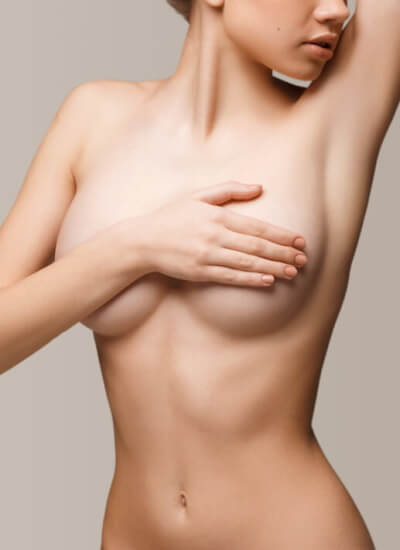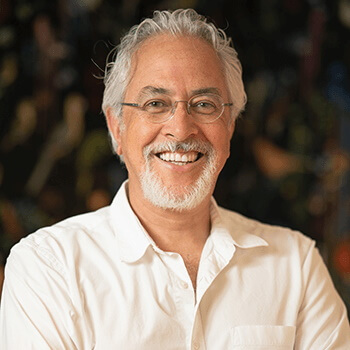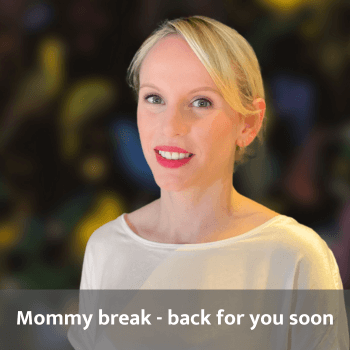Breast augmentation
Facts on breast augmentation

| Treatment methods: | DeBreast method (painless, gentle, insertion through the underbust fold) |
| Treatment duration: | 75-120 min |
| Anaesthesia: | General anaesthetic |
| Post-treatment: | No drains, only plasters and a girdle if necessary, check-up appointments |
| Removal of sutures: | Absorbable sutures used |
| Presentable: | Next day |
| Costs: | From 7,900 € plus anaesthetic, clinic and accommodation costs (implant) |
A shapely bust is a symbol of sensuality and femininity. If a woman feels that her bust is too small, her self-esteem can decline rapidly. Many women worry so much about the shape or size of their bust that they restrict their social lives. The feeling of not being perceived as a ‘real’ woman is often the trigger behind a woman’s desire for breast augmentation.
Here at Central Aesthetics, we are privileged to be able help women feel comfortable in their own body again – or, in some cases, for the very first time. To fulfil this aspiration, we individually plan each breast augmentation treatment. We perform breast augmentations using implants or the patient’s own body fat, depending on their wishes. With a range of surgical methods at our disposal, we can tailor procedures to accommodate specific wishes and requirements.
Make an appointment with us today for advice on the breast augmentation options open to you. In a one-to-one consultation, we can discuss how best to achieve your desired results and how we can help you to achieve a new sense of self.
Frequently asked questions on breast augmentation
In our practice, we offer two types of breast augmentation to our patients. As well as breast augmentation using implants, we also perform augmentations using the patient’s own body fat. For the latter, the patient must have a sufficient amount of fat tissue.
When performing breast augmentations with implants, we exclusively use products from reputable suppliers who have been CE-certified and offer patient-oriented guarantee models. Modern silicone implants are filled with dimensionally stable gel, excluding the chance of any leakage. Another option is extra-lightweight implants which, thanks to their special composition, weigh up to 30% less than standard models. This enhances comfort when fitted, especially in the case of larger volumes.
For breast augmentation using the patient’s own body fat, we firstly remove fat tissues from a predetermined part of the body. This fat is cleaned, prepared and injected into the patient’s breast using fine cannulas. In an ideal scenario, some 60–70% of the fat tissues remain in the breast. The rest of the tissue is broken down by the body over time. As this method is a combination of two operations, the time requirements and costs involved are greater than for breast augmentations with implants. For patients hoping to see results quickly, lipofilling is not an appropriate solution.
A breast augmentation using the patient’s own body fat only leaves behind minute scars that are barely visible in time. The scars after breast augmentations using implants differ depending on where incisions are made. In the vast majority of cases, an incision is made in the crease beneath the breast. Another option is to insert the implant through the areola area, in which case the incision is made either below or through the areola. These methods all leave scars of 4–5cm in length.
Generally speaking, the breast augmentations we offer our patients are almost painless. It makes no difference whether the implant is inserted above or beneath the chest muscle. The surgeon will always be mindful to select a procedure that protects the breast tissue, as this means you’ll only feel slight tightness after the surgery and can lift your arms again straight away.
You may feel slight pressure pain under the breast in the days immediately following the procedure, though this usually subsides quickly. If the implant is placed beneath the chest muscle, the muscle’s strength may be limited at first – something the patient might notice when opening a heavy door, for instance. On the whole, however, breast augmentations do not cause patients any significant pain when carried out properly by specialist surgeons.
There are many manufacturers of implants who offer a wide range of high-quality models which differ in terms of their surface structure, filling material and shape. We use both smooth implants and models with a variety of different textures. Some types of implant also feature a thin coating layer made of polyurethane foam which ensures that the implant doesn’t move as the tissue grows or slip out of position. Coated implants also aim to reduce the risk of capsular contracture.
In terms of the implants’ shape, we differentiate between round models and those that are anatomically shaped (also known as ‘teardrop’ implants). The point of projection in round implants is relatively high, while anatomical implants mimic the natural shape of the breast. However, that isn’t to say that round implants always look artificial and anatomical models always look natural: various individual factors need to be considered when selecting an implant. For this reason, we start by discussing your wishes in a personal consultation before working together to select the right implant shape for you.
In an ideal scenario, breast implants can remain in the body for a lifetime. Whether and how often it’s worth replacing implants also depends on a whole host of different factors specific to the individual patient. Of course, implants should be replaced if the patient’s health is at risk or if there are any indications that an implant may have been damaged.
Following breast augmentation surgery, a woman’s bust remains subject to the natural ageing process. If the shape and position of the breast deteriorate over time, in some circumstances it may be worth considering replacing the implants.
There are various methods by which breast implants can be replaced. The decisive factor is how the implant was first inserted and the position it’s currently in. Ideally, the surgeon would use the scar from the initial operation to access the implant in order to avoid creating any new scars. Depending on the surgeon’s findings, a new implant can then be inserted in its place.
Capsular contracture is the formation of tight, hardened scar tissue around the implant. This capsule of scar tissue is usually removed either partially or in full, along with the implant.
The effects of breast augmentation largely depend on the individual patient’s circumstances. Breast augmentations using patients’ own body fat usually appear much more natural as they don’t create artificial rounded shapes. Nevertheless, when selecting implants we consider the patient’s physique and the nature of their bust. We then select an implant from a range of shapes and degrees of firmness to find a model that fits most harmoniously with the patient’s overall image.
Breast augmentations can only be measured in bra sizes to a limited extent, as these sizes vary depending on the manufacturer as well as subjective perceptions. A decisive factor in breast augmentation using the patient’s own body fat is how much material can be introduced into the breasts.
As a general rule, though, implants allow us to augment patients’ breasts by 1.5 to 2 cup sizes, and in some instances even as much as 3 cup sizes. Breast augmentations using your own body fat would augment your bust by around one cup size. Of course, breasts can be augmented even further over a series of procedures – though we wouldn’t recommend this.
Address
Central Aesthetics by Dr. Deb
Mainzer Landstraße 65
60329 Frankfurt am Main
Opening hours
| Monday | 8:30am - 6:00pm |
| Tuesday | 8:30am - 6:00pm |
| Wednesday | 8:30am - 6:00pm |
| Thursday | 8:30am - 6:00pm |
| Friday | 8:30am - 6:00pm |
and by appointment





